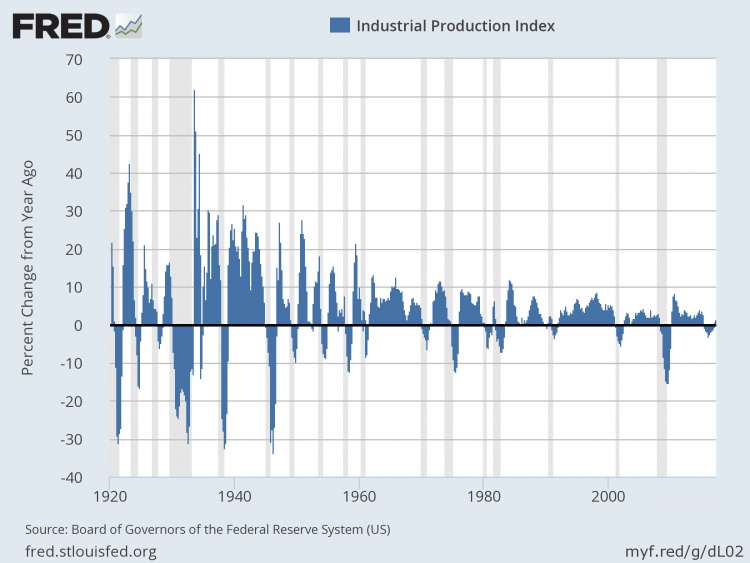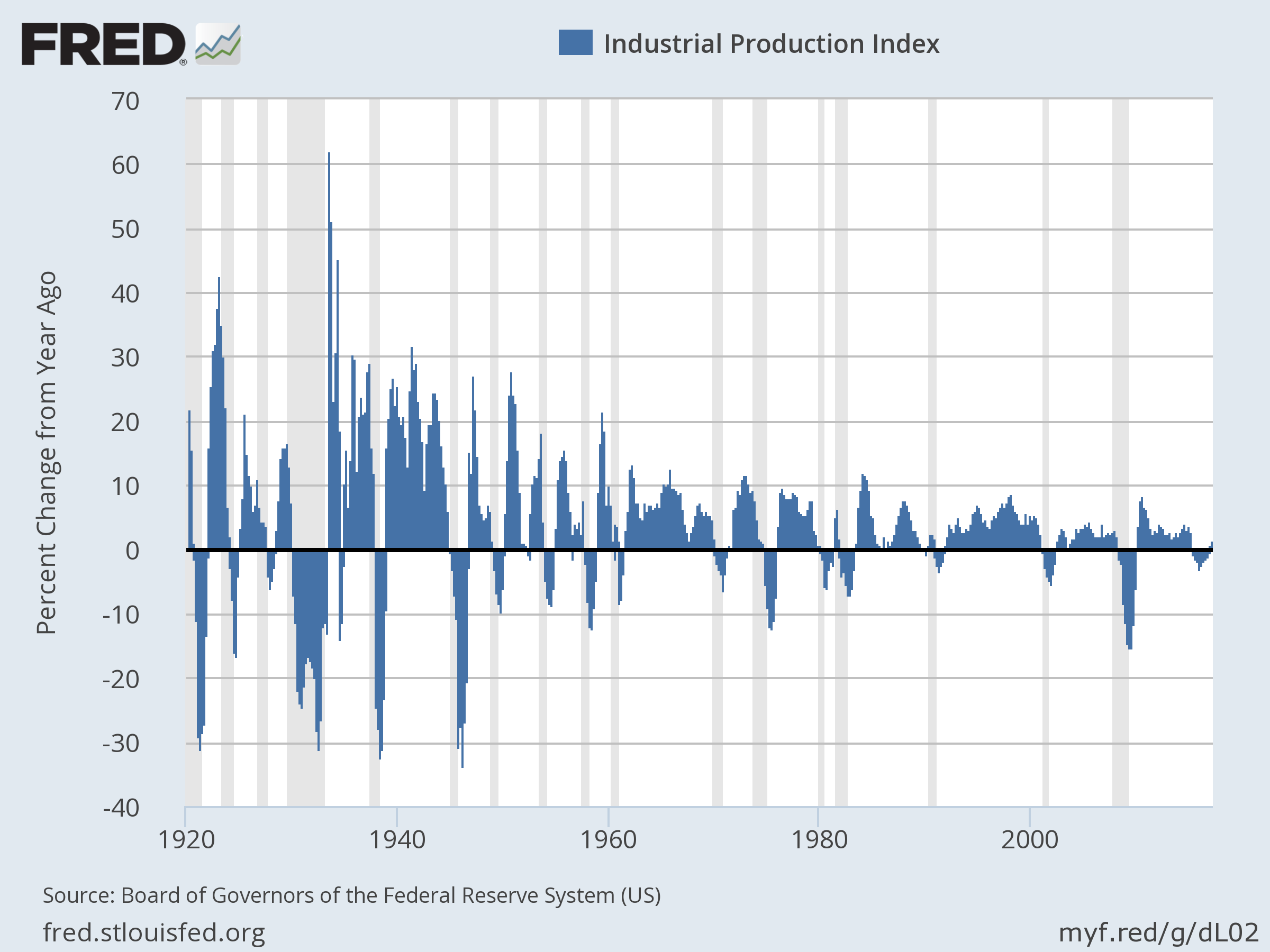
The search for a silver bullet in business-cycle analysis is hardy perennial. But it’s a search that’s almost certainly destined for failure.
No single indicator is infallible in the quest to identify a new recession. Some pundits suggest otherwise, but history isn’t kind on this front. A recent example: US industrial production. Several observers of the macro scene were quick to point out last year that the extended run of negative year-over-year changes in output was a sure sign that another recession was fate. The reasoning was that red ink for production in annual terms for more than a few months was always linked to an NBER-defined downturn – based on the historical record going back to the 1920s.
By that logic, the economic outlook looked quite grim late last year. The annual decline in industrial production in Nov. 2016 marked the 20th straight month of decline. By some accounts, nearly a century of economic history suggested that the jig was up. Every case of slumping industrial activity for that length of time was linked with a recession.

But as we now know, industrial output has rebounded in recent months and the odds that a recession has started is virtually nil at the moment, based on data published through Apr. 2017. Tomorrow’s another day, but the available figures in hand– across a broad spectrum of indicators – betrays no sign of recession risk.
The failure of industrial production to signal a new recession may be surprising, but relying on one indicator to provide a robust measure of the business cycle is an accident waiting to happen. But let’s not limit this caveat to industrial activity. The same can be said of other indicators that are lauded as dependable benchmarks of the trend.
Indeed, some analysts are smitten with the ISM Manufacturing Index, convincing at least one investment strategist to proclaim that this metric is all you need to accurately gauge the state of the US economy. But here, too, recent history has raised doubts about the dependability of this data when used in isolation.














